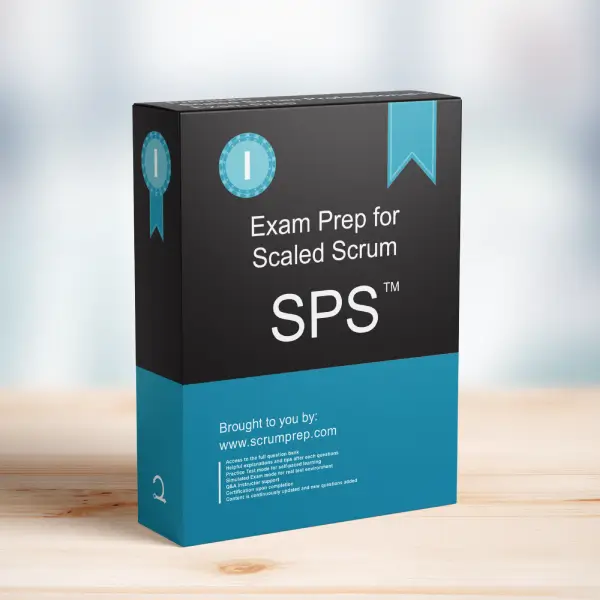True or False: When multiple Scrum Teams are working together on the same product, each team should maintain a separate Product Backlog.
A. True
B. False
Correct Answer
B. False
Explanation
When multiple Scrum Teams are working on the same product, they should work from a single Product Backlog. This approach ensures that there is a unified, ordered list of everything that is needed for the product, which helps maintain alignment and transparency across all the teams.
Detailed Explanation
Single Product Backlog for Unified Vision: A single Product Backlog ensures that all the Scrum Teams working on the product have a shared understanding of the priorities and goals. This unified vision is crucial for maintaining consistency and coherence in the development process.
Avoiding Duplication and Confusion: Multiple Product Backlogs can lead to duplication of work and confusion about priorities. By having one Product Backlog, teams can avoid these issues and work more efficiently.
Facilitating Coordination: A single Product Backlog makes it easier to coordinate dependencies and integration points among the Scrum Teams. This coordination is essential for delivering a cohesive product increment at the end of each Sprint.
Ensuring Transparency: A single Product Backlog enhances transparency by providing a clear and comprehensive view of all work items. This transparency is vital for stakeholders and team members to understand the current state of the product and make informed decisions.
Relevance to the SPS Exam
Understanding the importance of a single Product Backlog when multiple Scrum Teams are involved is critical for the SPS exam. It demonstrates knowledge of effective backlog management and how to scale Scrum practices.
Conclusion
In a scaled Scrum environment, maintaining a single Product Backlog for a product ensures alignment, efficiency, and transparency across all teams involved. For more information on preparing for the SPS exam, visit our Scaled Professional Scrum SPS™ Exam Prep.



